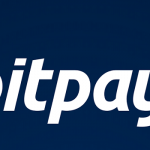Disclosure: the author of this article is a partner at KryptoKit
One of the more exciting things to come out of the Bitcoin economy in the last month is the sheer number of new merchants that are accepting it. In the past week alone, we have the Scottish tech store CeX accepting Bitcoin for one of its new promotional offers and including in one of its stores a Bitcoin ATM, Bitcoin merchant payment processing company raising $30 million from Index Ventures and Richard Branson, as well as breaking 30,000 merchants, a large store in Sweden taking BTC, and existing Bitcoin businesses like Cheapair and BTCTrip are expanding their offerings into hotels. Even US politicians can now legally accept Bitcoin donations. However, at the same time, actual Bitcoin adoption is proceeding considerably more slowly. Transaction counts and unique address counts have only just stopped declining since the last bubble and are starting to recover, and Google search volume is still going down, though historically it is known that search volume is one of the last indicators to reverse a downward trend after a Bitcoin bubble. By now, the majority of people in developed countries have heard of Bitcoin, and they have either made the choice to use it or not use it. If we want to see Bitcoin getting used by more people, it is thus the Bitcoin ecosystem itself that needs to change.
In my view, however, what needs to change the most is a fundamental shift in focus in terms of how we want to see cryptocurrency adopted. Currently, the way that ordinary consumers are “supposed” to use Bitcoin is as follows:
1. Buy bitcoins at an exchange, incurring heavy inconvenience providing documentation and waiting for account activation, or at localbitcoins or an ATM, paying a 3-15% fee.
2. Spend those bitcoins at a merchant.
Let us analyze the benefits of doing this versus the traditional credit card approach. First off, the total fee using Bitcoin is substantially larger than the 3% charged by credit cards and Paypal. In some cases, it is less; for example, in the US one can buy bitcoins at a 1% fee with Coinbase, but in many other countries it is substantially higher. Second, the hassle is higher. Most people already have credit cards, and getting set up with Bitcoin is a hassle. Finally, Bitcoin has much higher volatility risk. In some cases, for example where privacy is an issue, credit cards are not available in certain countries or are even used as mechanisms to enforce region blocking, or the recipient does not have a bank account, Bitcoin is superior, but by and large there is little advantage for the consumer to fall into this pattern.
Now, let us consider an alternate case: an employee receives part, or all, of their salary in Bitcoin. In that case, that employee now has two choices:
1. Save the bitcoins, and eventually spend them at a merchant.
2. Convert them to cash, paying a 1-5% fee (generally, more people want to buy than sell, so the “street” fees are lower on the sell side).
In this case, (1) is in very many cases a superior value proposition, especially when combined with the convenience of browser wallets like Kryptokit as well as cash-back offers from Gyft or the money-saving Amazon pass-through service Zincsave. Of course, there is also the option of declining the bitcoins and taking fiat, presumably at a 0% fee, but the general point is that that when people receive bitcoins through their employer the equation radically shifts in Bitcoin’s favor. Now, there remains one question: don’t the conversion fees just get passed on to the employer? However, here there are two solid answers. First, the process of obtaining bitcoins is done by fewer employers, and therefore in larger volumes, reducing fees drastically. Second, quite often the employer should not need to pay any fees at all – specifically, if they are also accepting BTC as a merchant and thus directly receiving it from customers. In the long term, ideally more and more businesses would start both accepting BTC as merchants and paying out BTC to desiring employees, thereby creating increasingly large closed-loop economies with no fees at all.
So why isn’t this happening already? The main issue is a practical one. Although platforms for accepting Bitcoin as payment do exist, and platforms for sending Bitcoin to employees exist, the platforms do not talk to each other. Both input-side and output-side platforms exist independently of each other, and both assume that the business ultimately wants to send and receive fiat currency. There is also another issue: volatility risk. Although businesses that use Bitcoin on both the input and output side would end up shuffling a lot of BTC through directly, one can expect there to be an unpredictable imbalance between the two sides, and so the business would need to keep some quantity of BTC on hand as “float”, and thereby be vulnerable to gains and losses from the change in the Bitcoin price.
To the former concern, the solution is obvious: make a platform that handles both the input and output sides simultaneously. To the second, there are two solutions. The first is hedging: use a platform like Bitfinex to make a leveraged bet against the Bitcoin price going up, and constantly adjust the size of this bet so that the Bitcoin price going up by $1 equally benefits the business by increasing the value of its BTC holdings and hurts it because of the leveraged bet in the opposite direction on the exchange. In this circumstance, of course, the Bitcoin price going down by $1, or by $200, would also have no net effect, so the business is (almost) completely insulated from all upward and downward risk. The second is simpler: give employees who want BTC the option of receiving a “mystery amount” of the currency per day, and calibrate that amount to be exactly equal to all incoming BTC receipts. The rest of their salaries would then of course be paid in traditional fiat currency. A third solution is a hybrid approach: send as much BTC as possible directly from customers to employees’ wallets, and get the rest from an exchange or sell it at an exchange. A full-stack input-and-output enterprise-bound Bitcoin payments platform should ideally support all options.
Finally, of course, such a scheme requires not just technology but a few daring businesses willing to adopt it. Some companies, like blockchain.info, are content to go 100% BTC, but traditional firms are of course not willing to take such a leap. TigerDirect and Overstock, however, would likely be quite happy to integrate a platform as I described above if only someone were to create it. There are undoubtedly enough tech geeks in both companies to completely absorb all of the incoming customer BTC straight into their pockets, and smaller Bitcoin businesses should also try the same thing. The pitch to businesses is simple: some of your customers want to pay Bitcoin, some of your employees almost certainly want to receive at least some Bitcoin, so meet both needs at the same time and cut costs on both ends.
Aside from reducing fees, widespread adoption of such a scheme would not only cut fees down drastically, but also help stabilize the Bitcoin price. Right now, absent deliberate speculation, the default pressure on the Bitcoin price is down. The reason is that there are much more people spending Bitcoin than earning it, and the coins paid to those earning it are generally paid out of the pockets of BTC-holding venture capitalists or customers and not bought at an exchange. If this happens, however, the equation will change, since the default destination for bitcoins spent by customers will simply be tech enthusiasts’ wallets. The price will thereby be able to stay more stable in the long term even without large new waves of interest. And of course, hopefully, the larger number of consumers ready to spend bitcoin will be what actually drives the next wave.
The post Bitcoin Needs Employers, Not Merchants appeared first on Bitcoin Magazine.














